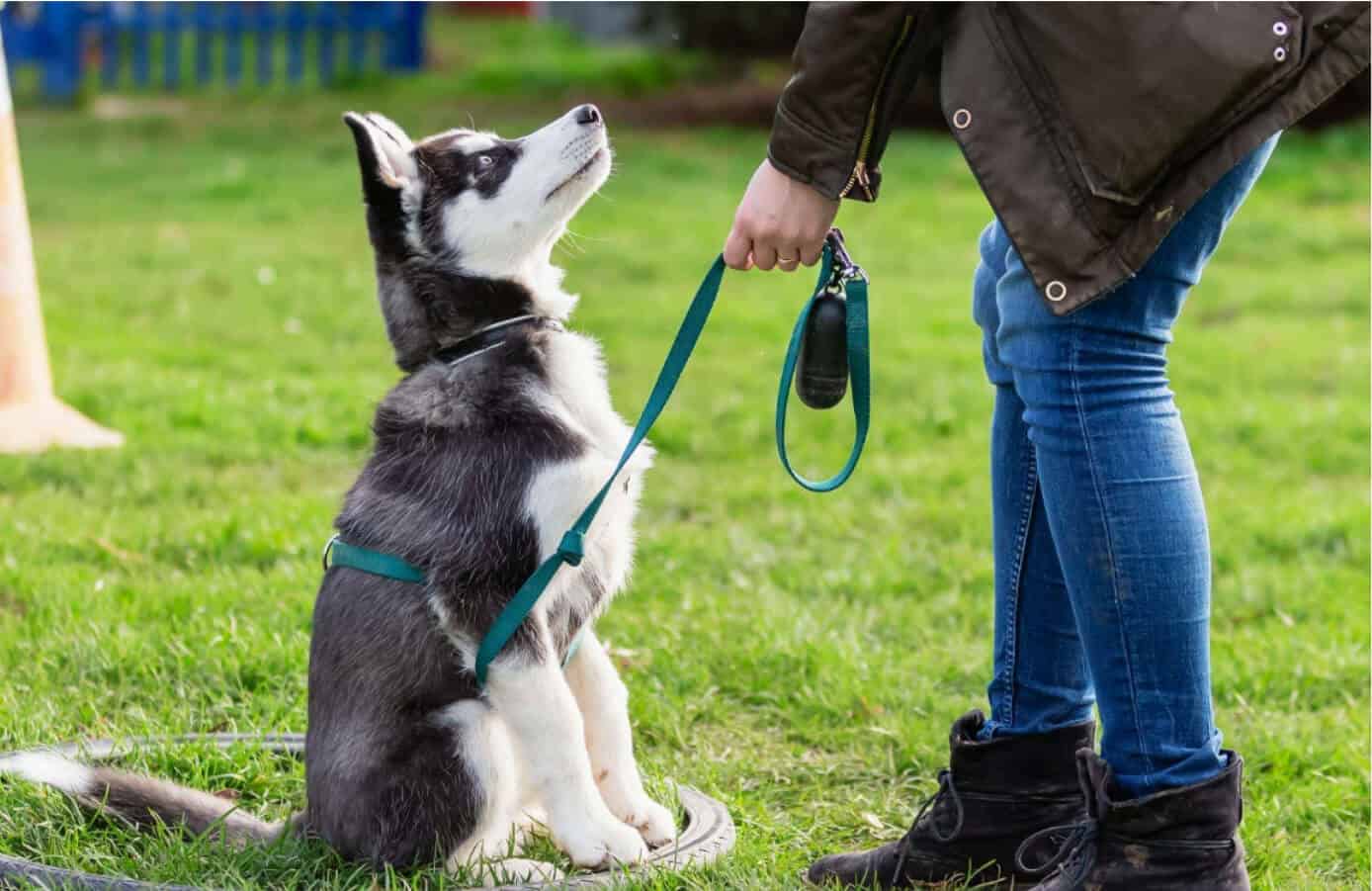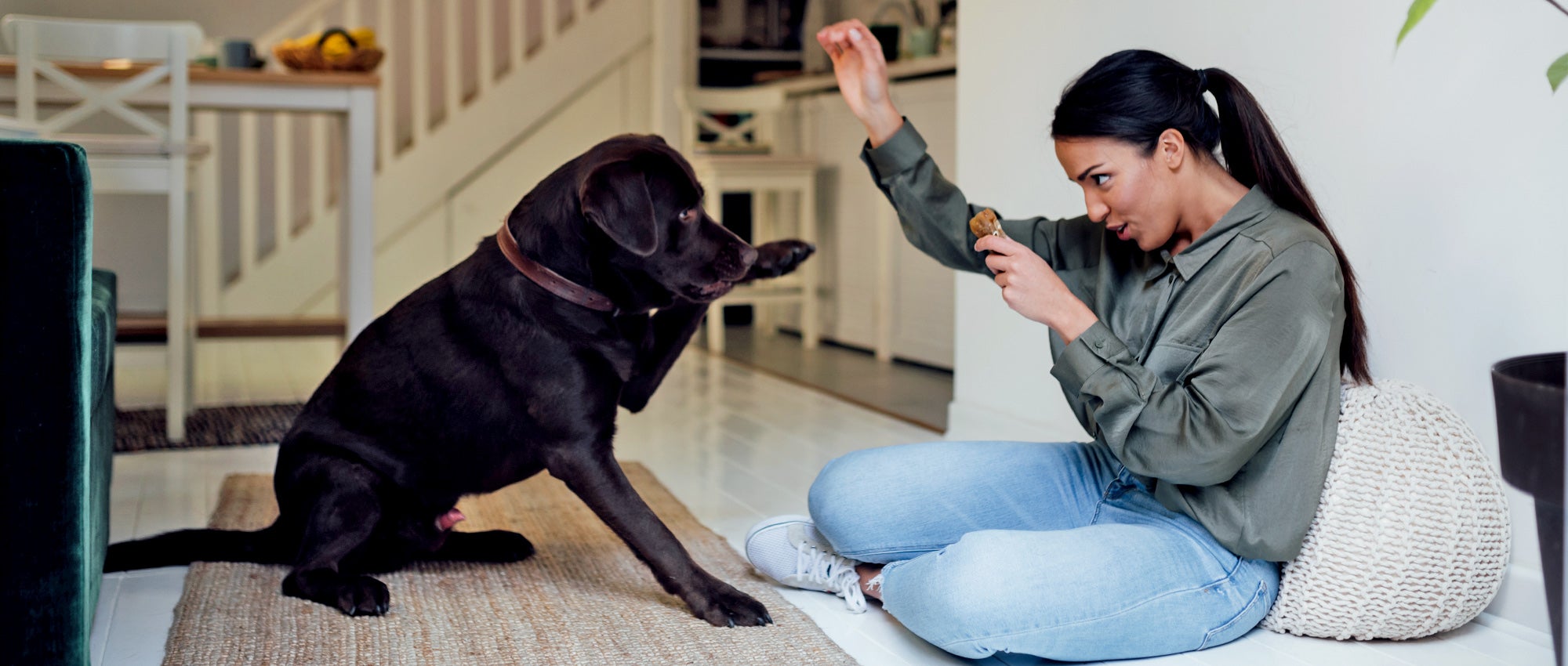Step-by-Step Approach to Dog Training: Simple Tips for Every Dog Owner
Step-by-Step Approach to Dog Training: Simple Tips for Every Dog Owner
Blog Article
Beginner's Overview to Effective Pet Dog Training in the house
Successfully educating a pet dog at home needs a nuanced understanding of canine behavior and reliable interaction techniques. Developing clear training goals, using top quality rewards, and preserving consistency across family members are crucial aspects. Integrating training into daily routines can boost both engagement and retention.
Understanding Pet Habits
Comprehending pet dog behavior is necessary for reliable training and promoting a harmonious relationship in between human beings and their canine buddies. Pet dogs interact mainly through body language, vocalizations, and facial expressions, making it vital for owners to interpret these signals properly. Acknowledging actions such as tail wagging, growling, or shrinking can offer insights right into a pet's psychological state and purposes.

Common behavioral issues, such as aggression, stress and anxiety, or extreme barking, typically come from misunderstandings or unmet requirements. Observing and attending to these problems without delay can prevent acceleration and ensure a favorable training experience. By promoting a deep understanding of pet habits, proprietors can tailor their training methods to match their canine friends, eventually resulting in a mannerly and happy pet dog.
Vital Educating Devices
A well-appointed training space can significantly improve the effectiveness of dog training at home. Necessary training tools make certain that both the trainer and the pet can take part in efficient sessions that foster discovering and bonding.

Purchasing a tough chain and a comfortable, well-fitting collar or harness is crucial for safety and security and control. These tools help develop boundaries and ensure the dog stays secure throughout training. Additionally, a marked training location, without diversions, help focus for both the trainer and the dog.
Training help such as training pads, cones, or agility tools can also boost the experience by presenting variety and difficulties. Last but not least, having a note pad or digital app for tracking development can be invaluable, permitting you to note successes and locations for enhancement. Utilizing these crucial tools will certainly create a favorable training atmosphere and lay the structure for reliable learning.
Creating an Educating Regimen
Establishing a consistent training routine is vital for effective canine training in your home. A well-structured regular not only assists in enhancing wanted behaviors but also supplies your pet dog with a complacency and predictability. To develop an effective training regular, start by recognizing certain training goals, such as standard commands, chain strolling, or housebreaking.
Choose a designated time every day for training sessions, preferably when your dog is alert and receptive. Procedure should be short, approximately 5 to 15 minutes, to keep emphasis and protect against exhaustion. Uniformity in timing and atmosphere will certainly boost your pet dog's understanding experience.
Include training into everyday activities to reinforce abilities. For example, practice commands during strolls or nourishment, which integrates finding out right into natural routines. In addition, continue to be flexible and adjust the regular as needed, fitting your canine's energy levels and state of mind.
Positive Reinforcement Strategies
Favorable reinforcement techniques are basic to effective canine training, advertising preferred behaviors via incentives instead of penalty. This approach utilizes positive stimuli, such as deals with, appreciation, or play, to encourage dogs to duplicate certain activities. The foundation of this approach is timing; incentives ought to be given promptly following the wanted habits to create a clear organization.
When carrying out positive support, it is vital to choose incentives that are encouraging for your canine. High-value deals with, such as tiny pieces of poultry or cheese, can be especially efficient throughout training sessions. In addition, varying the incentives can maintain your pet dog's rate of interest and interest.
Beginning with easy commands, like "rest" or "stay," and progressively development to extra complex tasks. Uniformity is essential; ensure that all family participants utilize the same commands and benefit systems to prevent complication.
Additionally, it is crucial to continue to be individual and visit site stay clear of irritation. Pets, like people, learn at their very own rate. By cultivating a supportive training setting via favorable support, you can enhance your pet dog's learning experience while enhancing the bond in between you and your furry friend, laying the foundation for effective training outcomes.
Common Training Obstacles
While training a pet dog in the house can be a gratifying experience, it often comes with a collection of usual challenges that can evaluate both patience and consistency. One common concern is distraction. Canines might become easily sidetracked by noises, activities, or even scents in their environment, making it challenging to preserve their focus during training sessions.
An additional challenge is disparity in commands and support. If member of the family make use of various hints or rewards, it can prevent and puzzle the canine development. Developing a unified strategy is important for efficient communication.
Furthermore, pet dogs can experience frustration or stress, especially if they do not understand what is expected of them. This can result in undesirable actions, such as chewing or barking.
Lastly, the timing of support is critical (Dog training). Postponed incentives can decrease the performance of positive support, as pet dogs may fail to attach the habits with the reward
Conquering these difficulties requires dedication, clear communication, and an look at here organized training strategy. Acknowledging and addressing these usual obstacles will certainly pave the means for a more effective and pleasurable training experience at home.
Verdict
To conclude, effective pet training at home requires a comprehensive understanding of canine behavior and efficient interaction techniques. By developing clear training goals and using top quality treats alongside positive support, the training procedure comes to be much more fulfilling for both the canine and the fitness instructor. Versatility, uniformity, and patience are important parts that assist in understanding. Inevitably, integrating training right into daily routines enhances the bond between canine and owner, making the experience both enjoyable and productive.
Developing a regular training regimen is vital for reliable pet dog training at home.Positive support techniques are fundamental to effective pet training, advertising desired behaviors via benefits rather than punishment (Dog training). By fostering a supportive training environment with positive support, you can improve your canine's knowing experience while strengthening the bond visit this web-site in between you and your hairy buddy, laying the groundwork for effective training end results
In verdict, effective pet dog training at home necessitates a detailed understanding of canine behavior and efficient communication strategies. By developing clear training objectives and utilizing high-quality treats alongside positive support, the training process becomes extra gratifying for both the canine and the trainer.
Report this page